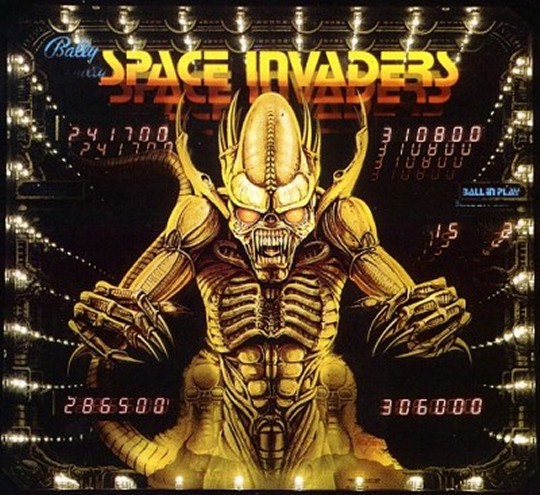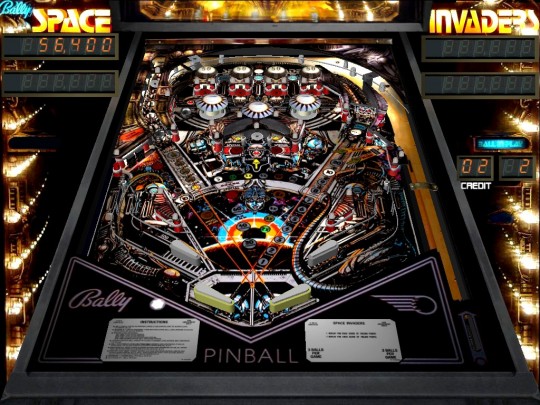|
A WHOLE NEW BALL GAME
Some people – far less perceptive
and intelligent people than you, the good and wise viewers of Retro
Gamer – always say the same thing whenever anyone makes a videogame
about pinball. “But what’s the point of making a pinball
videogame?”, they moan. “Pinball’s all about the physical
sensations, and shoving the machine around in the pub and stuff.”
These people are cretins, of course.
Pinball is simply the mechanical
equivalent of an FPS – hundreds of games use the same basic formula,
the difference between a good and a bad one is all about the level
design, and the key to success is pinpoint shooting. (The Goldeneye
pinball is pretty good, if you’re wondering.) But what happens when
you try to turn other types of videogame into pinball? (Smooth
link. – Ed)
One of the most interesting aspects of
the early videogames was the attempt by publishers to translate the
core aspects of their gameplay to other media. In a previous issue
of RG, for example, we looked at the early-80s board-game versions
of some classics, of which there are far more than most people know
(at least 20, going by the contents of my basement), and the same is
true about pinball. A whole clutch of the iconic videogames from the
Golden Era of the arcades also appeared in pinball form, with
varying degrees of success and faithfulness to their source
material. Tragically, nobody knows anything about them. Bummer.
Wait! I do! (Phew. - Ed)
-----------------------------------------------------------------------------------------------------------
SPACE INVADERS (Bally Midway)
Videogame 1978, pinball 1980

In 1980, videogames were still seen by
some in the arcade business as a flash-in-the-pan phenomenon which
hadn’t yet proved itself to be the long-term successor of pinball.
So when Taito’s seminal Space Invaders took the West by storm as it
had done in Japan, US licensors Bally Midway decided to spin it off
into their more traditional field of expertise, which was pinball.
They even went to the trouble of concocting a story explaining the
Invaders’ journey from screen to table, depicted in a four-page
comic-book section of the lavish flyer.
For some reason, though, in
the process of crossing the arcade divide, Tom-Tosh Nishikado’s
octopus-like space monsters got transformed into creatures uncannily
akin to the terrifying Xenomorph from Alien, and the entire machine
and playfield, while undeniably striking, look far more like the
work of H R Giger than the iconic art of Space Invaders. (Indeed,
Bally Midway were successfully sued over the steal.)
Nothing else from the videogame made it
to the pinball either – no gameplay elements, and an attempt at the
trademark heartbeat sound which would have any doctor rushing the
patient to intensive care with sirens blaring - and generally this
looks for all the world like an Alien pinball that got hastily
rebadged when someone lost the movie licence. Pinball was still
mechanically quite primitive at the time, lacking even such basic
features as ramps (flippers didn’t have the power to get the ball up
them), and all Space Invaders had to work with was a pretty dull
collection of bumpers and targets to light up, with a central
horseshoe loop the closest thing to heady thrills on offer. It
wasn’t an auspicious start for the crossover, but things would
improve pretty soon.

Space Invaders was still
such an enormous name at the time that over 11,000 Invaders
pinball machines were manufactured, a dizzyingly high number in the
world of pinball.
|
TO READ THE REST OF THIS FEATURE
(2,895 words), BECOME A
WoS SUBSCRIBER |
|

